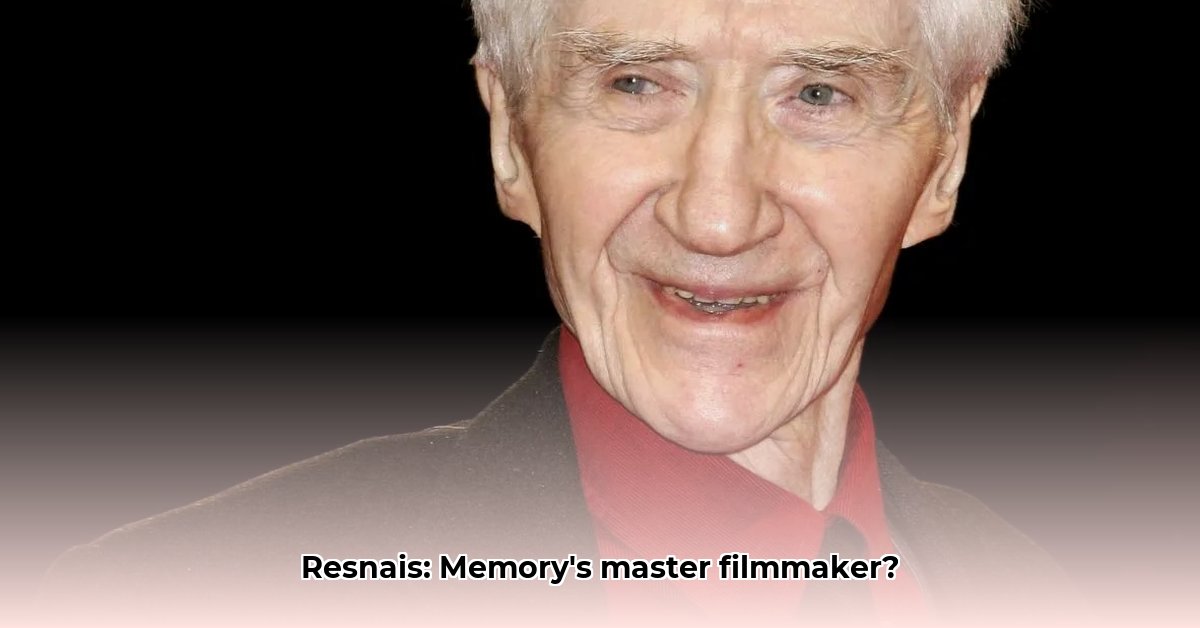
Right from the start, Alain Resnais wasn't your average rolprentmaker (filmmaker). He didn't just tell stories; he experimented with them, playing with time, memory, and our perception of reality in a way few others dared. Imagine a film where the past, present, and future blur, where the story unfolds in fragments rather than a neat line. That's the world Resnais crafted, revolutionising cinema in the process. Is it any wonder his films continue to fascinate and challenge viewers decades later?
Early Days: A Rebel with a Camera
His early work, particularly the documentary Night and Fog (1955), was a seismic event. This wasn't light entertainment; it confronted the horrors of the Holocaust, using innovative techniques to make the audience feel the weight of history. Think fragmented scenes, flashbacks—a radical approach to documentary filmmaking. It was a huge gamble, yet it paid off spectacularly. Suddenly, everyone was talking about this young director unafraid to tackle difficult subjects head-on. Resnais wasn't just making films; he was disrupting the status quo. How did this daring filmmaker achieve such impact? This article will delve into Resnais's career, demonstrating how his unique style continues to influence filmmakers, leaving an enduring mark on the art of storytelling.
The French New Wave and Beyond: A Master Collaborator
While not strictly part of the French New Wave, Resnais certainly rode its wave of innovation. His collaboration with Marguerite Duras on Hiroshima mon amour (1959) is legendary. This wasn't just a film; it was a powerful dialogue between two brilliant minds. The film's timeline is fractured, jumping between past and present, forcing the audience to piece together the unfolding love story. But it wasn't merely the structure; the emotional depth was breathtaking. It explored themes of memory, loss, and the enduring scars of war with an intensity rarely seen before. Did Hiroshima mon amour's success lay solely in its innovative structure, or did its emotional resonance also play a key role?
Then came Last Year at Marienbad (1961), co-written with Alain Robbe-Grillet. This film is a cinematic puzzle, a masterclass in ambiguity, leaving audiences perpetually questioning the events unfolding before their eyes. Was it a dream? A fragmented memory? A surreal romance? Its enigmatic nature ensures it remains a topic of endless discussion and interpretation. The film's atmospheric ambiguity, a direct reflection of Robbe-Grillet's nouveau roman style, cemented Resnais's status as a cinematic innovator. What accounts for the lasting impact of this deliberately disorienting masterpiece?
Later Years: A Deeper Dive into Human Experience
As Resnais matured, his films became more introspective, yet his experimental approach never waned. Providence (1977) and Life is a Long, Quiet River (1988) reveal a shift towards the complexities of human relationships and the passage of time. He wasn't abandoning his signature style; rather, he was refining it, adding layers of depth and emotional resonance. He explored the human condition, not through epic narratives, but through quiet moments, personal reflections, and the subtle mysteries of everyday life. This evolution speaks to Resnais's mastery in portraying how humans navigate memory, loss, and the inevitability of ageing. How did Resnais seamlessly blend his innovative techniques with increasingly intimate explorations of the human condition?
The Enduring Legacy: A Master's Touch
Alain Resnais's influence on cinema is undeniable. His innovative techniques, willingness to experiment with narrative structure, and collaborations with brilliant minds have inspired generations. His films remain intellectually stimulating and emotionally moving, forcing audiences to question their perceptions of memory, reality and time. They challenge us to confront uncomfortable truths while simultaneously finding beauty in unexpected places. His innovative cinematic techniques continue to resonate with filmmakers, a testament to his enduring legacy. What aspects of Resnais's work continue to capture the imagination of contemporary filmmakers?
A Closer Look at Resnais's Techniques
Resnais's masterful approach involved several key techniques:
| Technique | Description | Example Films |
|---|---|---|
| Fragmented Narrative | The story unfolds non-linearly, jumping between different time periods. | Hiroshima mon amour, Last Year at Marienbad, Muriel |
| Flashbacks/Flashforwards | Seamless transitions between past, present, and future to illustrate memory. | Night and Fog, Providence, Life is a Long, Quiet River |
| Ambiguous Narratives | Open to multiple interpretations; meaning isn't explicitly stated. | Last Year at Marienbad, On connaît la chanson |
| Surreal/Dreamlike Imagery | Unsettling images used to create a distinctive atmosphere. | Last Year at Marienbad, many later works |
| Masterful Mise-en-scène | Every detail in the frame is purposeful and contributes to the narrative. | Hiroshima mon amour, Smoking/No Smoking |
Resnais's work transcends easy categorisation. His films remain complex, demanding, and deeply rewarding, representing the power of cinema and the possibilities of challenging conventions. His legacy will continue to inspire filmmakers for many years to come.